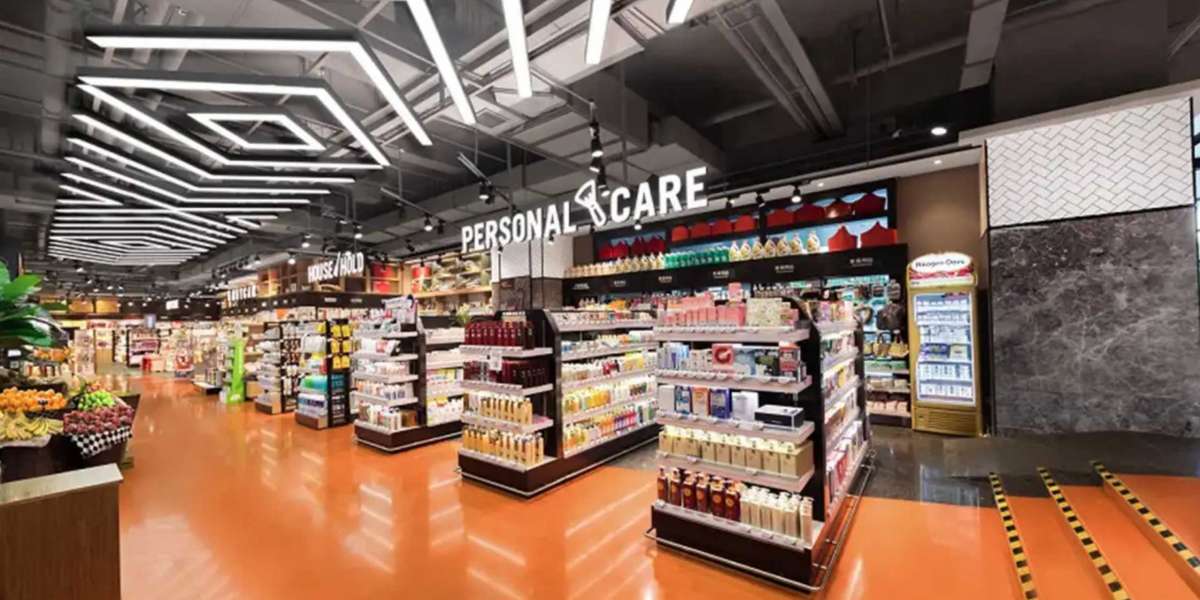Ventilation in Supermarkets
Supermarkets are large, busy environments where proper ventilation plays a crucial role in maintaining air quality, ensuring the comfort of customers, and promoting the efficient operation of equipment. With various departments, including fresh produce, refrigerated sections, and prepared food areas, each section of a supermarket has specific ventilation needs. This article highlights the importance of proper ventilation in supermarkets and the key factors to consider when designing an efficient system.
Why Ventilation is Important in Supermarkets
Air Quality and Customer Comfort: Proper ventilation is essential to ensure that the air inside the supermarket is fresh and free from odors. Supermarkets often have a mix of smells from fresh produce, cooked foods, and cleaning chemicals, which can create an unpleasant environment if not properly managed. A well-designed ventilation system helps circulate air, remove unwanted odors, and maintain a pleasant shopping experience for customers.
Temperature and Humidity Control: Supermarkets need to maintain stable temperature and humidity levels across different sections. Refrigerated areas, such as dairy, meat, and frozen foods, require specific conditions to keep products fresh. Meanwhile, other sections of the store, such as produce or bakery departments, need different environmental controls to prevent spoilage. Ventilation systems ensure proper airflow and temperature regulation, preventing excess humidity or dryness that could damage products or equipment.
Energy Efficiency: In a supermarket, refrigeration equipment and HVAC systems often consume significant amounts of energy. An efficient ventilation system helps regulate the overall climate inside the store, reducing the burden on air conditioning and refrigeration units. This not only enhances energy efficiency but also lowers operational costs by minimizing energy waste.
Health and Safety: Ventilation systems are also vital for maintaining health and safety standards. Proper airflow helps reduce the concentration of airborne contaminants, such as dust, bacteria, and viruses, which can pose risks to both employees and customers. Additionally, carbon dioxide levels need to be monitored and controlled to ensure air quality remains within safe limits, especially in areas where fresh food is prepared or stored.
Compliance with Regulations: Supermarkets must comply with local building codes and health regulations, which often include strict ventilation requirements. Ensuring that ventilation systems meet these standards is essential to avoid penalties and ensure a safe, compliant environment for both workers and shoppers.
Key Components of a Supermarket Ventilation System
HVAC Systems: Heating, ventilation, and air conditioning (HVAC) systems are the core components of supermarket ventilation. They regulate temperature, humidity, and air circulation throughout the store. Properly designed HVAC systems ensure that refrigerated sections, general sales areas, and staff zones are maintained at optimal conditions.
Exhaust Ventilation: Exhaust ventilation is essential in areas such as kitchens, bakeries, and prepared food sections where cooking generates heat, smoke, and odors. These systems remove contaminants and excess heat, ensuring a comfortable and safe working environment.
Air Filtration: To maintain clean air, supermarkets often use filtration systems that capture dust, allergens, and other particles. High-efficiency filters can also reduce the spread of bacteria and viruses, promoting a healthier environment.
Zoning and Airflow Design: Supermarkets require zoning strategies to meet the unique ventilation needs of different areas. For example, refrigerated sections need cool, dry air, while produce areas need humidity control. Zoning ensures that the right type of air is delivered to each section, improving product quality and customer comfort.
Installation and Maintenance
Proper installation and regular maintenance of ventilation systems are crucial for their long-term performance. Supermarkets should work with professional service providers to design, install, and maintain systems that meet their specific needs. Regular inspections and cleaning of ducts, filters, and HVAC units are necessary to ensure efficiency and avoid breakdowns.
For more information on professional ventilation system installation and maintenance, visit Termal Engineering, a company that specializes in the design and installation of engineering systems for various commercial settings.
Conclusion
Ventilation is a key component of supermarket operations, affecting everything from product preservation to customer comfort and energy efficiency. By ensuring that air quality is maintained and that temperature and humidity are properly controlled, supermarkets can create a better shopping experience, protect their products, and reduce operating costs.




